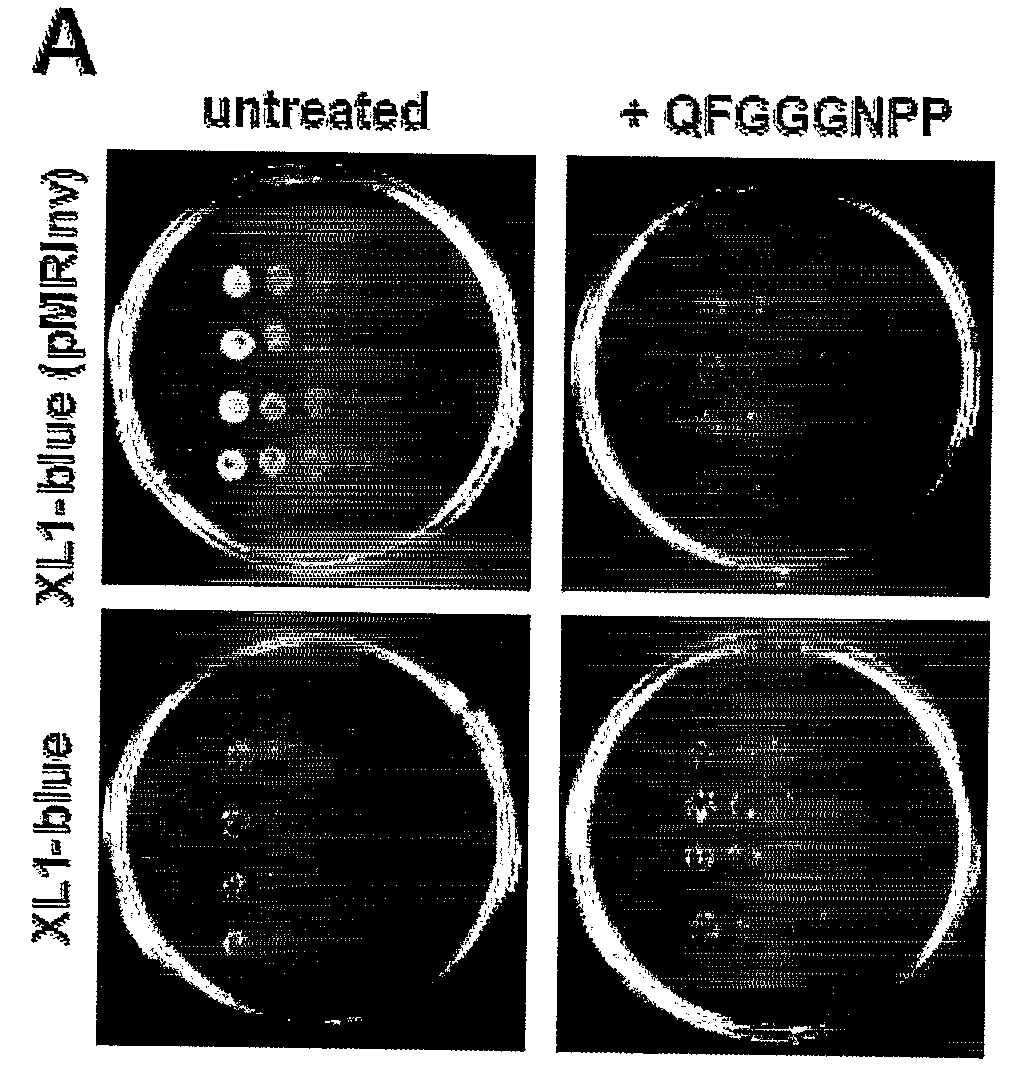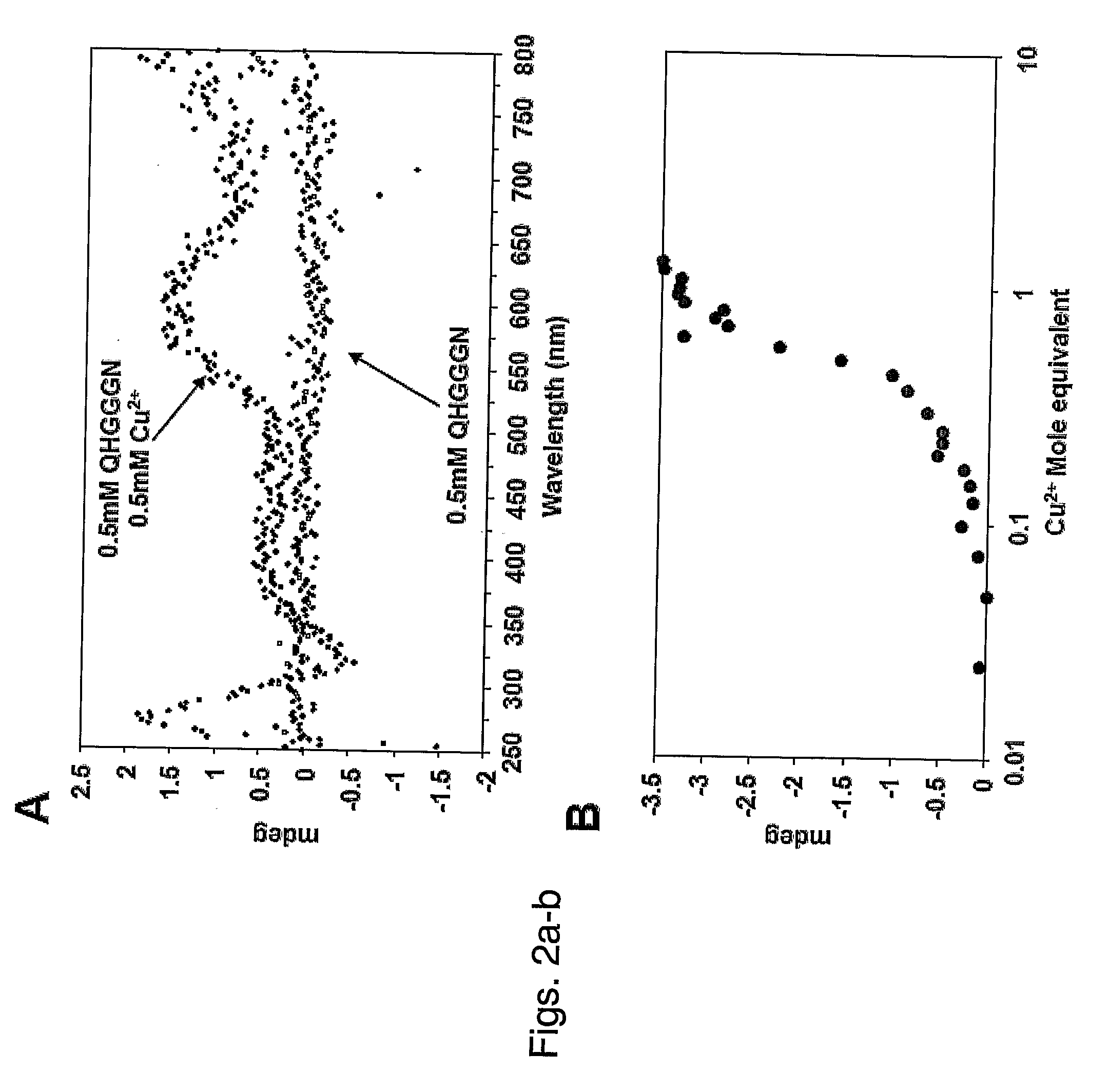Use of anti-amyloid agents for treating and typing pathogen infections
a technology of anti-amyloid agents and pathogens, applied in the direction of tripeptide ingredients, tetrapeptide ingredients, dipeptide ingredients, etc., can solve the problems of biofilm infection, chronic infection and device failure, and inability to effectively treat biofilm infections with conventional antibiotic therapy
- Summary
- Abstract
- Description
- Claims
- Application Information
AI Technical Summary
Benefits of technology
Problems solved by technology
Method used
Image
Examples
example 1
Identification of Prion-Like Hexarepeats within Curlin Major Subunit
[0350]The sequence of the CsgA protein consists of internal homologies (17). While analyzing the sequence of the amyloid forming CsgA protein, short oligopeptide repeats were identified which share a general chemical composition similarity with yeast and animal prion protein repeats (FIG. 1a). All three groups of short (6-9 residues) representative consensus repeats, PQGGYQQYN (SEQ ID NO. 1), PHGGGWGQ (SEQ ID NO. 2) and QFGGGN (SEQ ID NO. 3), in the case of yeast prion, human prion and curlin repeats respectively, are characterized by aromatic residues in conjugation with glycines (typically multiple) and glutamine / asparagine residues. This is also the case for the immediate homolog of CsgA, the AgfA fimbrin subunit of Salmonella (NCBI accession no. AAC43599, 17). Thus, it is postulated that hydrogen bonds interaction between the amides chains (9, 19) in concert with aromatic interactions (19-24), along with the str...
example 2
Self-Assembly Potential of Hexapeptide Repeats
[0351]To gain insight into the potential ability of the CsgA repeat to mediate the process of homo-recognition that leads to the formation of multi-protein aggregates, the ability of short peptides, corresponding to the repeats, to self-assemble into fibrillar structures was studied.
[0352]Transmission Electron microscopy (TEM) analysis had demonstrated the ability of NH2-QFGGGN-COOH and NH2-QHGGGN-COOH fragments to associate into well-ordered fibrillar structures ranging from 10 to 100 nm in diameter (FIG. 1b) in 3-6 days. The importance of the phenylalanine and histidine residues in the formation of fibrils was further substantiated by electron microscopy analysis of similar oligopeptides lacking the aromatic residue. To this end, the fibrillogenesis potential of the QAGGGN (SEQ ID NO. 4) fragment under the same conditions was studied (FIG. 1b). As is shown, no ordered structures could be detected under these experimental conditions. In...
example 3
Copper Binding Potential by Hexapeptide Repeat
[0357]The animal prion protein (PrPC) was suggested to act as a copper-binding glycoprotein, where the Cu2+ binding site was identified within peptide repeat domain (25). Specific and equimolar binding of copper by a single peptide repeat was clearly demonstrated. This ability is assumed to be mediated by coordination of the imidazole moieties of the histidine residues (25).
[0358]Circular dichroism (CD) spectroscopy was used to analysis the QHGGGN interaction with copper. As shown in FIG. 2a, increasing amounts of CuCl2 altered both visible and UV regions of the CD spectra, consistent with both structural induction within the peptide motif and orientation of the copper ions within a rigid framework. Moreover, stoichiometric analysis of the CD signal of the copper is consistent with a single Cu2+ ion binding for each peptide molecule (FIG. 2b). The same equimolar binding stoichiometry was observed for the PrP octarepeat (26), suggesting a...
PUM
| Property | Measurement | Unit |
|---|---|---|
| pH | aaaaa | aaaaa |
| path length | aaaaa | aaaaa |
| path length | aaaaa | aaaaa |
Abstract
Description
Claims
Application Information
 Login to View More
Login to View More - R&D
- Intellectual Property
- Life Sciences
- Materials
- Tech Scout
- Unparalleled Data Quality
- Higher Quality Content
- 60% Fewer Hallucinations
Browse by: Latest US Patents, China's latest patents, Technical Efficacy Thesaurus, Application Domain, Technology Topic, Popular Technical Reports.
© 2025 PatSnap. All rights reserved.Legal|Privacy policy|Modern Slavery Act Transparency Statement|Sitemap|About US| Contact US: help@patsnap.com



